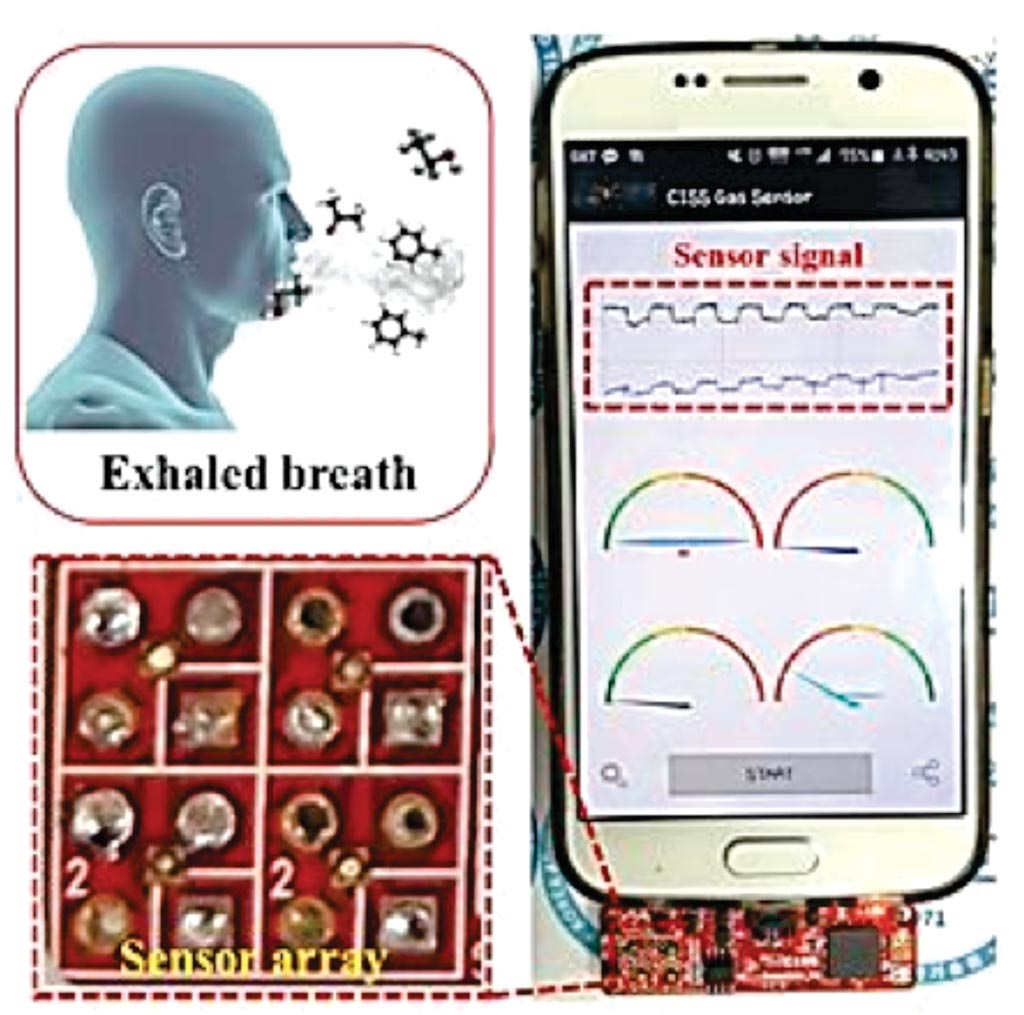Innovative Nanosensor Developed for Disease Diagnosis
By LabMedica International staff writers
Posted on 03 Aug 2017
In human breath, diverse components are found including water vapor, hydrogen, acetone, toluene, ammonia, hydrogen sulfide, and carbon monoxide, which are more excessively exhaled from patients. Some of these components are closely related to diseases such as asthma, lung cancer, type 1 diabetes mellitus, and halitosis.Posted on 03 Aug 2017
Diagnostic sensors have been developed using protein-encapsulated nanocatalysts, which can diagnose certain diseases by analyzing human exhaled breath. This technology enables early monitoring of various diseases through pattern recognition of biomarker gases related to diseases in human exhalation.

Image: Sensing device: Simple characterizing target gas concentrations of human exhaled breath will lead to diagnose of the disease as well as physical condition (Photo courtesy of The Korea Advanced Institute of Science and Technology).
Scientists at The Korea Advanced Institute of Science and Technology (Daejeon, Republic of Korea) created chemiresistive type breath sensors with exceptionally high sensitivity and selectivity that were developed by combining hollow protein templated nanocatalysts with electrospun metal oxide nanostructures. The protein-templated catalyst synthesis route is very simple and versatile for producing not only a single component of catalytic nanoparticles, but also diverse heterogeneous intermetallic catalysts with sizes less than 3 nm.
To overcome the current limitations, the team utilized nanoscale protein (apoferritin) in animals as sacrificial templates. The protein templates possess hollow nanocages at the core site and various alloy catalytic nanoparticles can be encapsulated inside the protein nanocages. The protein nanocages are advantageous because a nearly unlimited number of material compositions in the periodic table can be assembled for the synthesis of heterogeneous catalytic nanoparticles. In addition, intermetallic nanocatalysts with a controlled atomic ratio of two different elements can be achieved using the protein nanocages, which is an innovative strategy for finding new types of catalysts. For example, highly efficient platinum-based catalysts can be synthesized, such as platinum-palladium (PtPd), platinum-nickel (PtNi), platinum-ruthenium (PtRu), and platinum-yttrium (PtY).
The biomarker sensing performance was improved approximately 3~4-fold as compared to the conventional single component of platinum and palladium catalysts-loaded nanofiber sensors. In particular, 100-fold resistance transitions toward acetone (1 ppm) and hydrogen sulfide (1 ppm) were observed in exhaled breath sensors using the heterogeneous nanocatalysts, which is the best performance ever reported in literature. The team developed a disease diagnosis platform that recognizes individual breathing patterns by using a multiple sensor array system with diverse sensing layers and heterogeneous catalysts, so that the people can easily identify health abnormalities. Using a 16-sensor array system, physical conditions can be continuously monitored by analyzing concentration changes of biomarkers in exhaled breath gases.
Sang-Joon Kim, PhD, the senior author of the study said, “New types of heterogeneous nanocatalysts were synthesized using protein templates with sizes around 2 nm and functionalized on various metal oxide nanofiber sensing layers. The established sensing libraries can detect biomarker species with high sensitivity and selectivity. The new and innovative breath gas analysis platform will be very helpful for reducing medical expenditures and continuous monitoring of physical conditions.” The study was published in the July 2017 issue of the journal Accounts of Chemical Research.
Related Links:
The Korea Advanced Institute of Science and Technology













